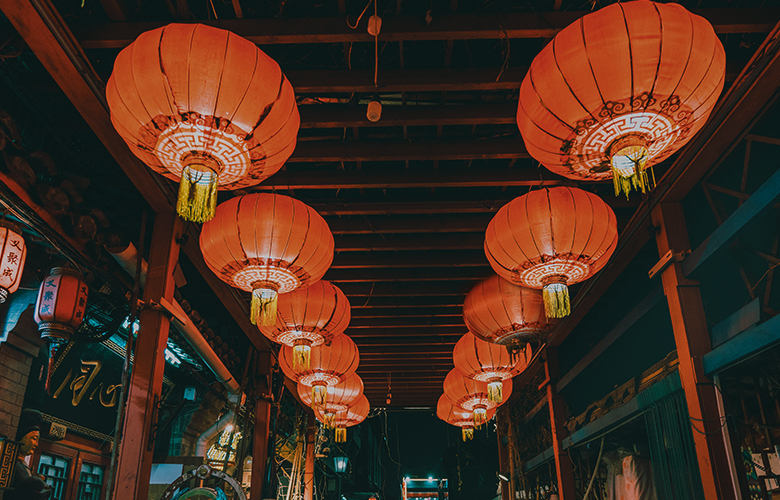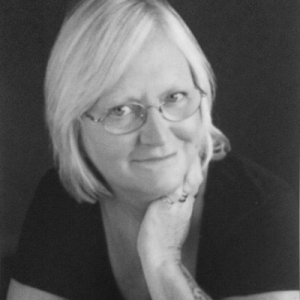
In 1981 our family relocated from Scotland to Beijing, a place we knew virtually nothing about. We soon discovered that leisure activities were mostly those organised by the expat community, including film shows at Embassies, and local television.
Theatre was a less frequented source of entertainment, but an extremely good one. For foreigners the difficulty was in finding out what was playing and where (the later publication of The China Daily newspaper in English helped a lot), to buy tickets. There was no system where you could telephone a box office or the like; your only hope was to go to the theatre a few days in advance and hang around, often for hours, until someone turned up who would sell tickets.
There was a reasonable variety of shows, although the Revolutionary Operas of the time of Chairman Mao had ceased to be on the repertoire. Traditional, and beautifully costumed, dramas of maidens in distress and lovers parted, could be seen together with the well-known Peking Opera. “A group of arguing tomcats” or “an untuned orchestra” were but two of the many comments I often heard about this particular art form, for the music seemed totally alien to the western ear. In addition to which the songs were given a unique intonation which made them incomprehensible even to many Chinese members of the audience, so the words, in Chinese characters, were projected on to screens at either side of the stage. I personally loved the sound, but to the majority of foreigners it was purely the visual spectacle that made it worthy of a visit, for the costumes must have been amongst the most opulent ever seen: rich colours with intricate embroidery, elaborate headdresses that seemed to defy gravity, triangular flags protruding from the shoulders – it was amazing that the performers were so agile.
Many of the actors also wore very detailed facial makeup resembling masks which were symbolic as well as colourful: a red face denoted bravery; a black one honesty and justice; a white one treachery and a yellow one ruthlessness, and even within these parameters an expert could tell the age and disposition of a character through subtle differences in the makeup.
Stories of the renowned Monkey King were also loosely labelled ‘opera’, but had a good deal of the circus in them, featuring as they did amazing acrobatics and split-second timing with hurtling spears. One female performer I saw could return spears and staffs thrown to her not just with her hands, but by kicking back ones thrown from the rear – and without once turning her head to look. This athleticism and timing must have been partly inborn as I often saw young children in the street tossing heavy-based shuttlecocks into the air for minutes on end and using only the sides of their feet.
This was understandable if your Beijing sightseeing tour followed the usual timetable: The Great Wall, Ming Tombs, hurried dinner and then the opera. Tired at the start and subjected to an ear bashing of unintelligible and seemingly unmelodious songs, few decided not to leave and retreat to their hotels for an early night. This was wonderful for the locals (and me!) as they could only afford the cheaper seats at the back, but once the second half had begun and it was obvious the ‘foreign friends’ were not planning to return, there was a great scrabbling and rushing to occupy the first few rows. The most colourful, acrobatic and impressive performance was always saved till last but was, sadly, missed by many.
Far more popular and a ‘must’ for all visitors was The Railway Workers Acrobatic Troupe which, despite the name, was not made up of talented engine drivers, linesmen and engineers but was a group of highly professional entertainers sponsored, and employed, by the Railway Workers. Their acrobatic performances were the best I have ever seen: unbelievably complicated balancing acts involving tables, chairs, trays of glasses; little girls who could bend their bodies into positions that seemed to defy anatomical possibility; jugglers throwing very large and heavy ceramic pots and catching them effortlessly on shoulders or heads – each act seemed more amazing than the last, culminating with the traditional ‘Lion Dance’.
Whereas acrobatics, musical dramas and opera could be found on somewhere all year round, an occasional visitor was the circus – sometimes performed in a sports stadium, sometimes in the traditional ‘Big Top’ erected on a spare piece of ground (increasingly hard to find in the city).
One lady bareback rider missed her cue every time and instead of leaping gracefully onto the horse’s back repeatedly landed with an undignified and undoubtedly painful thump on her bottom on the hard floor. While that was going on, another performer was agilely dodging the horse’s hooves in an attempt to hack away (with a very blunt knife) a potentially dangerous loop of rope that had suddenly appeared through the sawdust. The whole performance was further punctuated from my point of view (or lack of!) by a team of incredibly tall American basketball players who had obviously had a few beers beforehand and one after the other, at intervals of a few minutes apart, had to work their way along the rows to go to the toilet.
The most frightening performance I ever saw at a circus involved tigers. A circular cage had been erected in the ring, but a large number of the bolts fastening the sections together were missing and I was sure that if one of the animals threw itself against the bars the whole cage would have collapsed leaving tigers on the loose. I spent most of the performance working out whether it would be best to run for the only exit or hide under the seats!
Whatever the type of entertainment the common denominator was desperately hard and uncomfortable seating and smelly toilets. Even the more upmarket theatres boasted little more luxury than thin carpet laid on top of the concrete floor. There were a couple of other noticeable differences between theatre in China and theatre as we know it. The first was a matter of logistics: seats were numbered with number one being in the middle and all seats to the left being even numbers and all those to the right being odd. There were also two entrances to the auditorium, marked ‘odd’ and ‘even’ – in Chinese characters. This caused great confusion and sometimes consternation amongst the foreigners who would find that seats 35 and 36 were at opposite ends of the same row.
The second difference was the attitude of a Chinese audience. A night out was a great event to be enjoyed to the full and if eating, drinking tea, knitting or whispering comments to neighbours enhanced this enjoyment then it was quite acceptable to do any or all of these things during a performance. On one occasion a visiting conductor was invited to take part in a concert but was amazed that no matter how many times nor how insistently he tapped his baton and raised his arms in expectation of silence, absolutely nothing happened. The rustling, chewing, clicking of knitting needles etc, continued unabated, but be assured that once he finally gave up and the orchestra started to play anyway, the audience was not one jot less appreciative of the music than their counterparts at the Albert Hall. If they didn’t feel it essential to their enjoyment to remain utterly still and silent, by the same token they didn’t turn a hair when overhead floodlights suddenly exploded and showered them with fragments of glass. They just brushed the glass onto the floor and the performance continued without a hiccough.
Also on TheatreArtLife:
Flow: Life Lessons From Grandmama Estelle
Keys To Transcending Life’s Push And Pull


Patricia Farr was born in London and trained as a teacher, but opted out of state schools and taught English as a Foreign Language in London. She then worked in London for five years as a proofreader of film and cinema scripts and occasional novels. In 1975, Patricia married and spent one year in Rhode Island, where her husband attended the Naval War College after which she returned to Scotland to start a family. From 1981-1983 and 1985-1989, Patricia lived in Beijing where her husband served as the British Naval Attache. Following the appointments abroad, Patricia and her family returned to Scotland, where she and her family collected a large number of rescued or orphaned animals. Still desiring great adventures- our idea of a family holiday was driving a Land Rover from the north of Scotland to the Sahara Desert and back! After her husband's death in 2000, Patricia stayed in Scotland until moving in 2006 to Taipei. She then spent two years in Auckland, New Zealand followed by seven years on Rarotonga, Cook Islands serving as a volunteer Home Support Worker and working for an NGO setting up Caregiver, Palliative and Disability Support services. Following a brief interval back in Scotland to kick Breast Cancer up the a***, she now spends summers in Scotland and the rest of the year in Taipei where Patricia volunteers with the Tzu Chi Buddhist Compassion Relief Society. Patricia’s philosophy has always been to follow your dreams and see where the wind takes you. Never, ever let an opportunity pass you by because you fear it might not work out - don't be afraid of the opinions of the "dreamstealers": if it doesn't work out, admit it proudly, change direction and move on. As her husband always said "if it seemed like a good idea at the time, then it was a good idea".
Read Full Profile© 2021 TheatreArtLife. All rights reserved.

Thank you so much for reading, but you have now reached your free article limit for this month.
Our contributors are currently writing more articles for you to enjoy.
To keep reading, all you have to do is become a subscriber and then you can read unlimited articles anytime.
Your investment will help us continue to ignite connections across the globe in live entertainment and build this community for industry professionals.